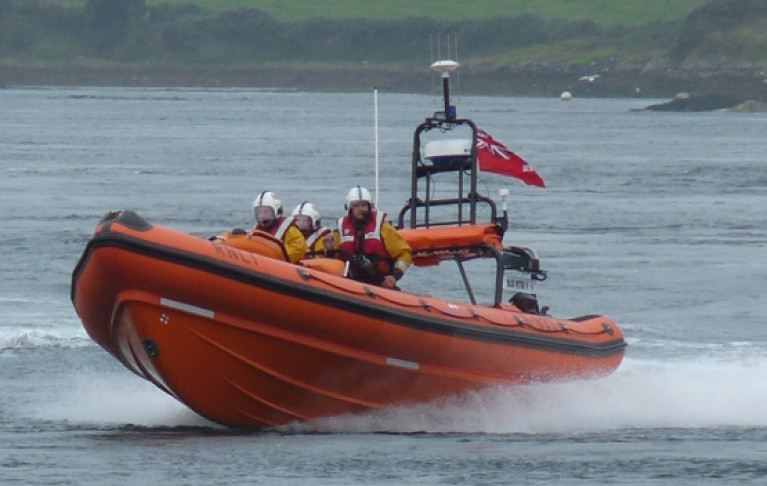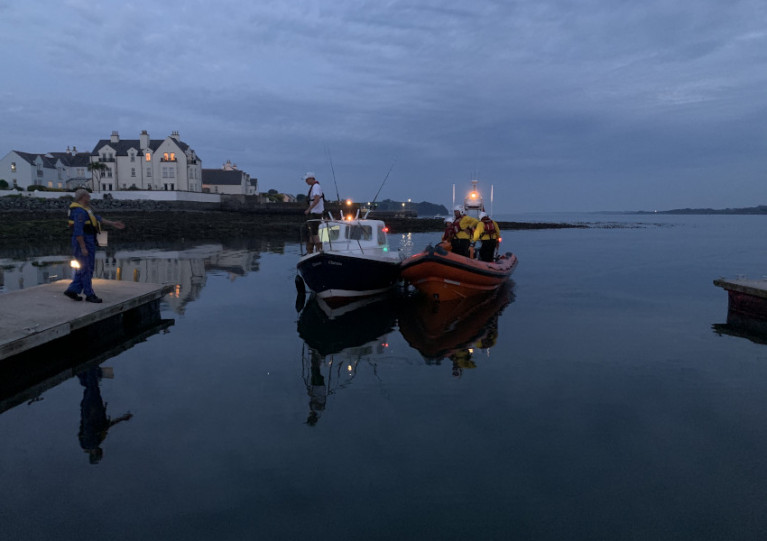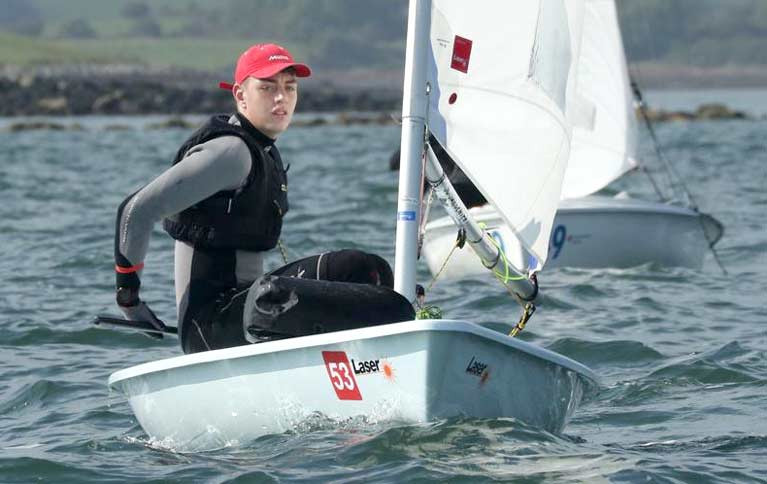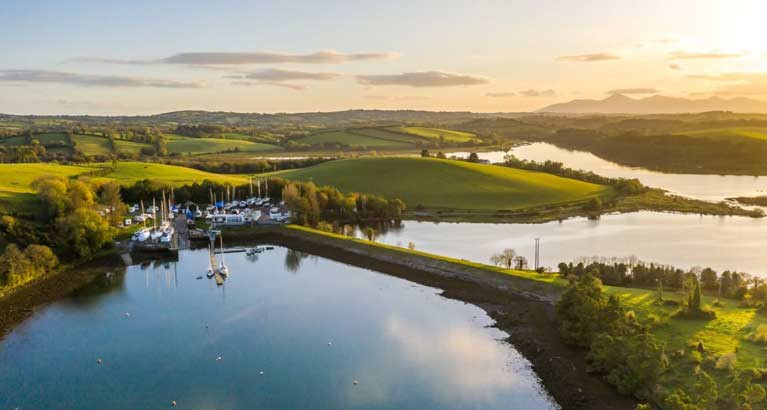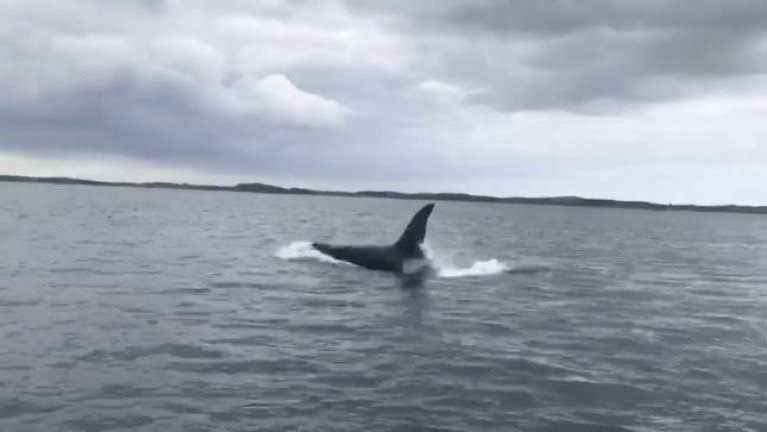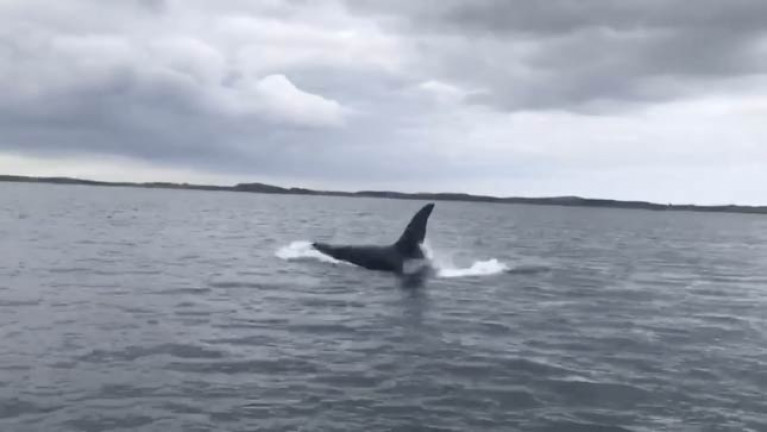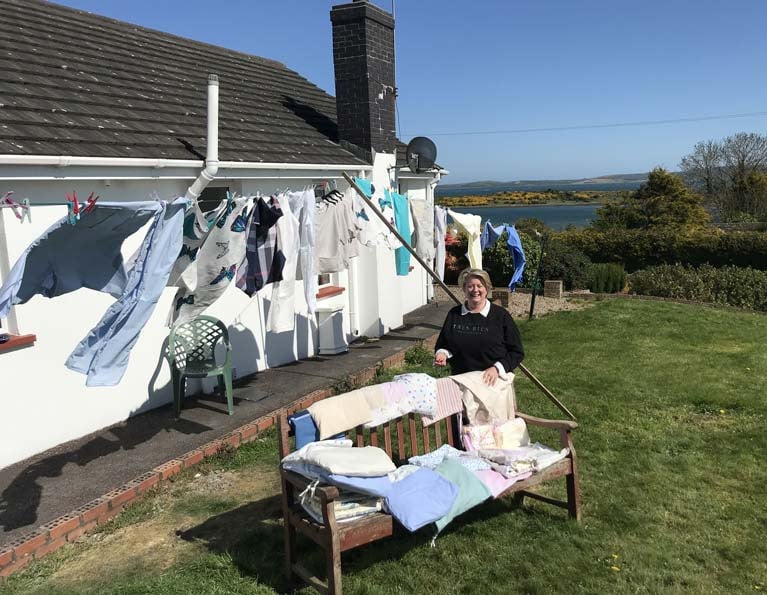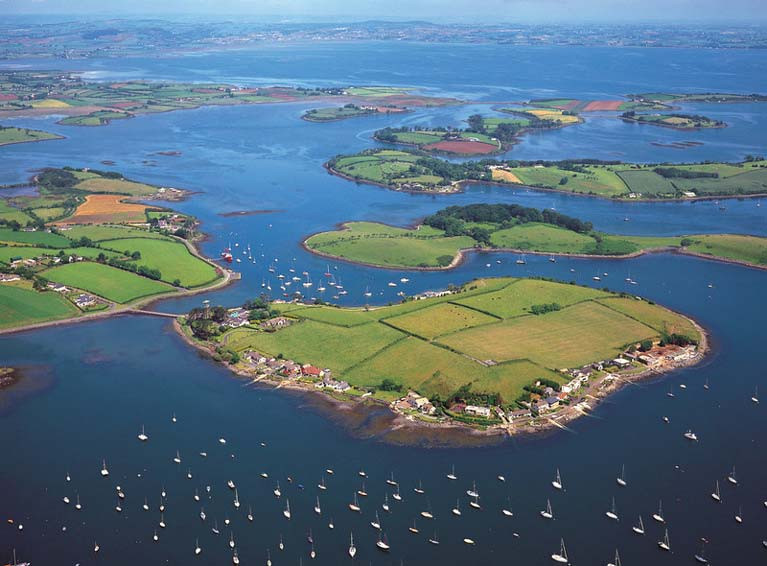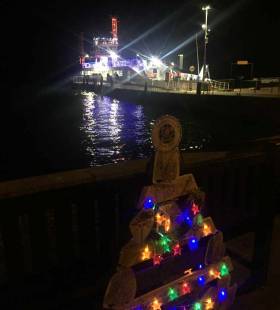Displaying items by tag: Strangford Lough
Portaferry Lifeboat Launches To Kayaker In Difficulty
Portaferry RNLI rescued a kayaker who got into difficulty on Strangford Lough on Wednesday night (5 August).
The volunteer crew were on the scene with the inshore lifeboat just eight minutes after launch, following an alert from passers-by who heard the kayaker calling for help at Walter Rock in the Strangford Narrows.
Directed by those members of the public, the lifeboat reached the casualty who had been in the water for between 15 and 30 minutes, clinging to his upturned kayak.
He was taken onboard the lifeboat and made comfortable before being returned to shore and passed into the care of Portaferry Coastguard. The lifeboat crew then returned to the Narrows to recover the kayak.
Speaking after the callout, Portaferry RNLI press officer Jordan Conway said: “We would like to commend the members of the public who raised the alarm last night which ensured we reached the casualty in good time.
“As the summer season continues, we remind everyone planning a trip to sea to always respect the water.
“Always carry a means of calling for help and keep it within reach. Wear a personal flotation device and check the weather and tides.
“Tell someone where you are going and when you are due back and always wear appropriate clothing for the conditions and your trip.”
Portaferry Lifeboat Launches Twice In Three Days To Reports Of Strangford Lough Breakdowns
Portaferry RNLI launched twice in three days to reports of broken down boats in the same area of Strangford Lough.
Portaferry’s volunteer crew launched initially on Thursday evening (25 June) at 9.50pm to assist a five-metre cabin cruiser at the entrance to Strangford Lough which had suffered engine failure after a fishing trip.
The inshore lifeboat towed the vessel to Portaferry Marina, handed the vessel to the local coastguard and assisted with berthing.
Portaferry’s lifeboat volunteers launched again yesterday afternoon (Saturday 27 June) at 5.07pm to tow to safety a seven-metre RIB which had suffered engine failure at the south end of Rock Angus, at the beginning of Strangford Lough.
Commenting on the callouts, lifeboat helm Colin Conway said: “As this is a busy period for Portaferry RNLI, we ask you to remember to have all your communication devices in good working order, to follow safety advice to stay as safe as you can, and always to respect the water.”
Junior Strangford Lough Sailor Uses 3D Printers to Make PPE Equipment in Fight Against COVID-19
Adam Fernor is a junior member of Strangford Lough Yacht Club and having not been able to sail his Laser dinghy during Lockdown, he joined a community of 8,000 volunteers, through 3D Crowd UK, who are using their 3D printers to make PPE equipment for a number of care homes, hospitals and surgeries.
Adam made 200 masks and has been busy fundraising and has raised enough money to buy another printer, which will double his output.
Sailor Myrea Jenkins has also been putting her skills to good use assisting the NHS. She joined a group of volunteers making scrubs for hospitals. Myrea’s latest batch of scrubs were sent to the Ulster Hospital in Dundonald.
Susan McKnight from the club commented: “It is fantastic to hear such stories emerging from our membership. Additionally, I am aware that there is a significant proportion of our membership who are key workers. I am humbled by the work that they are currently doing in order to keep us safe. Thank you.”
RYA Northern Ireland’s Chief Operating Officer Richard Honeyford said: “During volunteering week we remembered the hard work and dedication of our volunteers and how crucial they are in making our sport a success. While our sailors have been at home staying safe, they have been putting their skills to good use for the benefit of wider society. Examples like the volunteers at Strangford Lough Yacht Club show the value of volunteering and what we can achieve when we all work together. I would like to say thank you to you all.”
The latest statement from the Royal Yachting Association Northern Ireland, the governing body for all water activities in Northern Ireland says “In the absence of any further guidance from Government Departments, our current interpretation is that this does permit all forms of boating activity (sailing, windsurfing, powerboating etc) but only when:
- undertaken individually or by members of the same household
- there is no sharing of hard surfaces (including all types of boat)
- public health guidance is followed at all times
- strict social distancing can be undertaken
The current restriction at the time of writing is that the number of people who may gather outdoors from separate households is six with strict social distancing.
As of today, Stormont Ministers have decided there will not be any further changes yet to lockdown measures in Northern Ireland.
In the light of the lack of clarification on particular matters such as launching boats parked on Club premises, (perhaps the Executive has not yet considered the nitty-gritty of sailing) club members are in something of a dilemma about certain aspects of returning to the water, though marinas around the North seem to have made their own assessment of the situation and opened, albeit with strict protocols.
One of these in a quandary is Peter Mullan of Quoile Yacht Club on Strangford Lough. He says, “ I’m at Quoile and wondering at the lack of advice”.
Peter goes on to say “I have heard [May 20] that we can’t use the cranes to launch big boats because we can’t social distance. This is nonsense and means the people giving the advice are ill-informed. This activity involves six or less people meeting in the open air and social distancing” He continues “ Our outdoor toilets, separate from the clubhouse, are closed but yet the toilets at Ardglass golf club were open. It takes weeks to get all our boats in the water so this needs to be sorted ASAP”.
It seems that, like the marinas, each establishment will, of course, adhere to the Pathway to Recovery rules but with local interpretations within those guidelines, depending on the club locality, types of boats sailed and facilities.
For instance, Ballyholme Yacht Club has laid out criteria for its members, which they consider will be in operation when they open. They say in their ‘Return to Water’ planning “Step one of the NI Executive's plan will allow for a return to some on-water activity which we hope will include sailing.
This combined with the easing of restrictions allowing some activity with small groups of four to six people, whilst observing social distancing of two metres at all times, should allow us to open our slipways and dinghy parks and facilitate ‘social sailing’.
This will be an opportunity for members to get afloat albeit in small groups at any one time and mindful that having at least two boats on the water together potentially reduces risk.
The clubhouse will not be available at this stage and sailing will be for single-handed boats or double-handed boats crewed by members of the same household only. Safety cover will not be available at this stage, so sailors must be realistic about their abilities and importantly take into account the sea state and weather conditions to minimise risk”.
The BYC Executive Committee emphasises that these actions will only be implemented when it is safe to do so.
It may come to the point where common sense is the decider.
Update 25/5/20: Following contact from Quoile Yacht Club, Afloat wishes to clarify that Peter Mullan’s comments in relation to 'ill-informed advice' was directed at the Stormont COVID-19 guidelines and not Quoile Yacht Club. We are happy to clarify this point.
As sailors, if we want to preserve our playgrounds, or at least slow their destruction, we have to talk to others writes Strangford Lough's Robbie Gilmore
While I was at school, I gave a speech about a voyage my Dad and I’d undertaken from Strangford Lough to Wales. Now, coincidentally, on the voyage, I’d spotted some whales. Unfortunately, I thought I could turn this into a joke. The punchline went something like this:
‘We were just leaving the mouth of Strangford Lough. I was up on deck, keeping watch. My Dad was down below, at the navigation table. Suddenly, I saw two fins slicing up out of the water, just in front of the bow.
“Whales!” I shouted
“No it’s not,” my Dad replied, “not on my chart anyway!”’
I spread my arms wide and paused for effect (like I’d practised in front of the mirror every night for the preceding two weeks), waiting for the wave of laughter. Somebody blew their nose at the back of the assembly hall. Then there was an overwhelming silence.
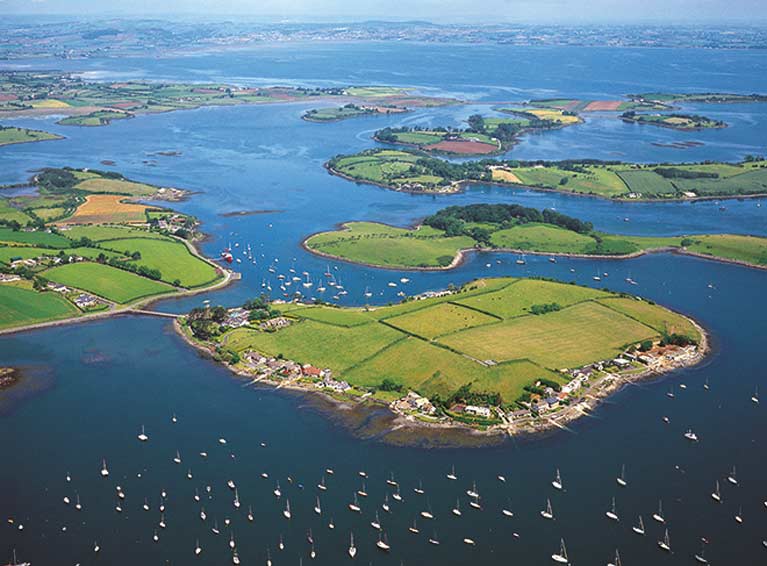 Strangford Lough from the air
Strangford Lough from the air
Later, I asked my friends where it had gone so wrong. ‘It’s just not believable Rob,’ they said. ‘Whales in the Irish sea? Don’t be ridiculous. You only get whales in places like the Canaries and stuff. I saw one on my holiday to Tenerife last year. You don’t get them in this part of the world.’
I told them it was true: I really had seen a whale off the Irish coast! They thought that was a pretty good joke.
But finally, ten years later, I’m vindicated. Last week the whales were back, all the way inside Strangford Lough, surrounded by photographers and pleasure boats, their arrival quickly splashed across social media.
They were two Killer Whales; creatures most people have only seen on David Attenborough programmes. Their arrival was a reminder of natural majesty we have right on our doorstep. But it was also a reminder of its fragility.
Those two whales are both males; the last members of a pod that live in the northern Irish Sea. Once they’re dead, the pod will be extinct. It is suspected that the pod failed to reproduce (when females were still alive), due to toxic heavy metal pollution in our waters, causing infertility.
"Can you imagine having a pissing section in a swimming pool?"
As sailors, the arrival of those whales into Strangford Lough, and their back story, should remind us of two things: First; the interconnectedness of our oceans. Can you imagine having a pissing section in a swimming pool? (I’m going to go out on a limb and guess the answer is no…)
Now, how do you feel about industrial waste being released into our oceans? What about sewage? How about nuclear dumping?
Strangford Lough – my home – is a national park, and heavily protected. But thanks to heavy metal pollution, from industrial plants somewhere else, there will be no killer whales in Strangford Lough when my children ply its shores.
Pollution there means destruction here.
If we want to protect our playgrounds, we must stand against environmental destruction everywhere.
Second; our close connection with the natural world gives us unique insights. We see the impacts that industrial capitalism is having on our planet, first hand.
A key reason for escalating environmental destruction is that people are less connected to nature, and therefore can’t see the damage that is being done. Sailing involves a direct connection with the natural world. In the modern world, that’s pretty unique. We have to make use of that unique perspective, to inform other people about the catastrophe that’s unfolding.
As sailors, if we want to preserve our playgrounds, or at least slow their destruction, we have to talk to others. Explain what’s happening to others. Describe the majesty of the seas we love; emphasise their fragility; campaign for their protection.
When we do so, people may laugh. Let them.
We’ll be vindicated, in the end.
As the often-quoted line goes: “First they ignore you, then they laugh at you, then they fight you, then you win.”
Orca Killer Whales Spotted in Strangford Lough (VIDEO)
A pod of orcas or killer whales caused great excitement in Strangford Lough, County Down yesterday. As reported by BBC News NI, local skipper Richard Connor from Causeway Boats said that it may be unusual but not unheard of. It was the third time he had seen them in 22 years of skippering.
Biologist Suzanne Beck from the Agri-Food and Biosciences Institute said the group that was in the lough are part of the West Coast community and may be seen a few times a year. "Usually they might travel on round the coast and the guys in the Hebrides might get a sighting and later they may travel right round Ireland, so you do hear of them every so often. They're just doing this circuit around us the whole time and it's only when they come close to the coast that we're getting these lucky sightings” They could have come in to chase a seal or been interested in different noises, but the concern was that they may keep travelling up through the Lough.
According to the Irish Whale and Dolphin Group NI they were initially reported yesterday afternoon several miles off Ardglass on the County Down coast before they pushed north into Strangford Narrows. “We can confirm from the presence of the bull known as "John Coe" that they are from the Scottish West Coast Community Group, which today has a core group of just seven or eight remaining individuals. They are recorded most years on a few occasions in Irish waters and this is the eighth time this apex predator has been recorded along the Co. Down coast since 2001. This is however not the first time killer whales have entered Strangford Narrows as a pod of four were photographed on Regatta Day off Portaferry on Aug. 18th 1962”. It was an exciting sight for children.
The McCarthy family got wind it was happening from the Irish Whale and Dolphin Group NI's Facebook page and decided to take a quick detour. “When we arrived, they were on the turn back and there were three boats near them”, Mr McCarthy said. I was concerned that it could turn into an awkward situation if they didn't find their way out through the Narrows but they seemed to make their way back fairly comfortably". He said the three boats out with them "did a good job of holding back". "It was a stunning night and what a treat," he added.
Around the shores of Strangford Lough, two long-time friends, Thelma and Louise, set up the North Down & Ards Scrubs for NHS group. The group was set up to help support NHS workers such as Thelma’s son who is a key worker within the NHS.
The group, which was set up only three weeks ago and now has over 30 teams (averaging 10 members per team) including stitchers, cutters, drivers and a few independent sewers, has made over 500 scrub sets to date. A huge achievement in such a short period.
They have sourced, cut and sewn through 600m of fabric, countless numbers of bed linen and sets and have just ordered a further 600m to send out to the many volunteers involved.
 Joanne McGown trying on the scrubs made by the volunteers from Quoile Yacht Club and Killyleagh Yacht Club
Joanne McGown trying on the scrubs made by the volunteers from Quoile Yacht Club and Killyleagh Yacht Club
The volunteers include a team made up of club members from around Strangford Lough including Quoile YC and Killyleagh YC. The team led by Liz Baker, RYANI Development Committee member and Quoile Yacht club member, is working alongside 12 others from Quoile and Killyleagh. Other club members include – Jill Heron; Julie Chambers; Bridie McKeating; Paddy Mullan; Bridie Warren; Heather Crawford; Sheenagh Crawford; Liz McCormick; Dawn Crosby; Helen Bready; Allison Crichton and Viv White – even getting their husbands involved, who are gaining new skills by getting roped into trace and cut patterns for the scrubs.
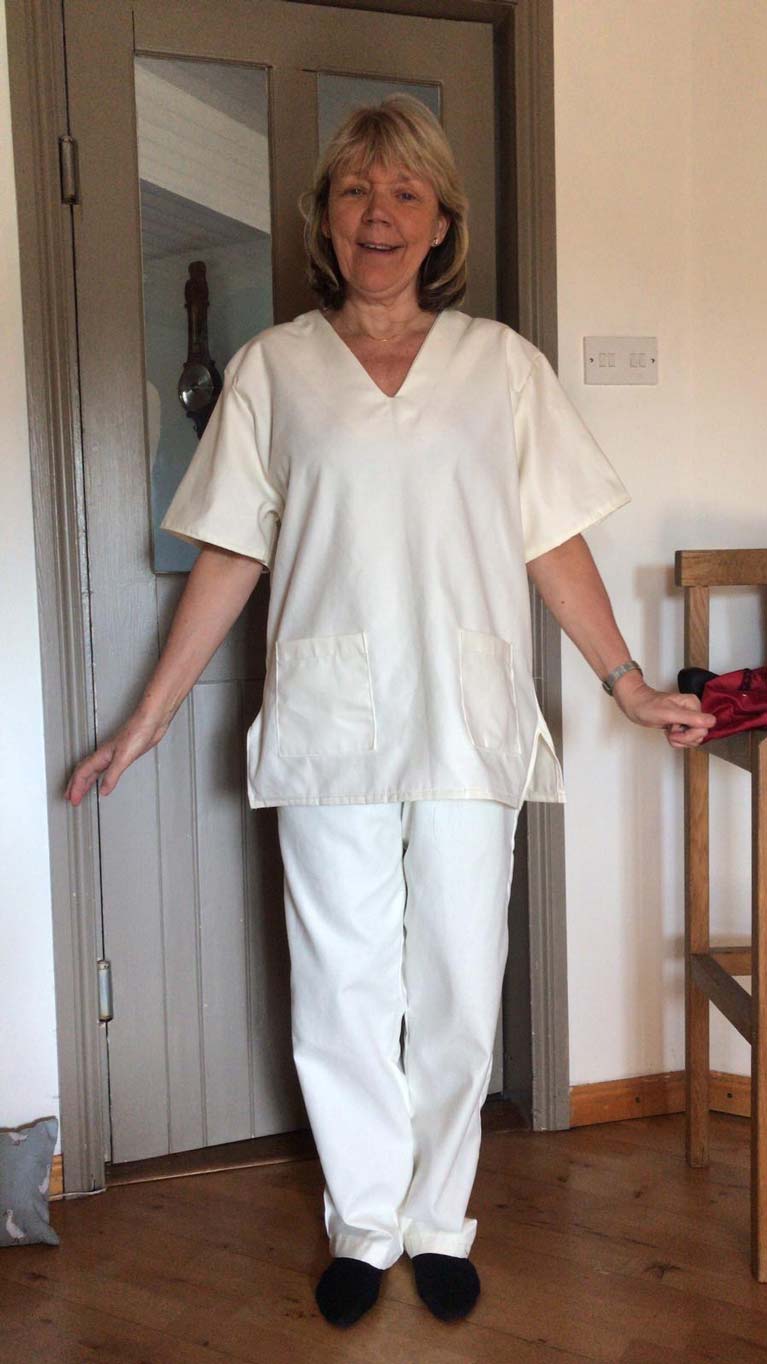 Julie Chambers trying on the scrubs
Julie Chambers trying on the scrubs
Liz Baker explains: “I heard about the group and thought that it was the right thing to do to help where I could, I can sew and was delighted to be able to support this group. Jill phoned me a few days later and asked if our local town support group - Killyleagh Community Association Covid-19 Volunteer group could help. Jill put out the call for those with sewing skills and donations of good quality bed linen.
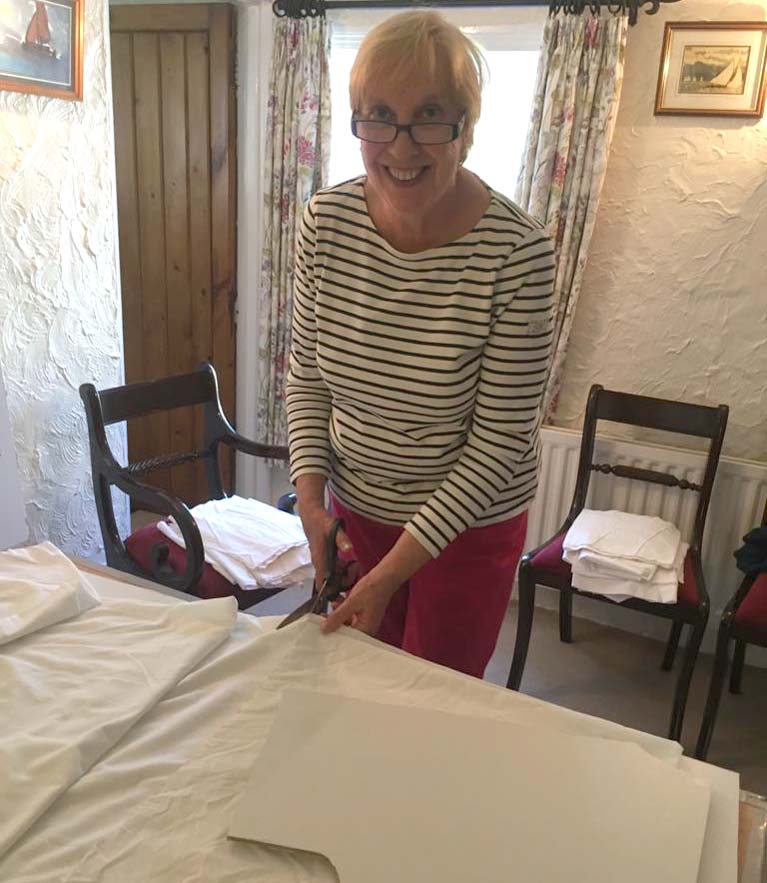 Paddy Mullan, Quoile Yacht Club member preparing the fabric for the scrubs
Paddy Mullan, Quoile Yacht Club member preparing the fabric for the scrubs
“This was all done with strict social distancing in mind, a large plastic box was left at the bottom of Jills drive into which donations were made. Very soon we had lots of donations and offers of help.
She continues: “I think it is a very worthy cause, it has not been easy to get materials such as fabric, thread and elastic but with the promotion of this group the community have come together by donating much-needed materials. Thanks to many kind donations including The Skip in Newtownards who donated fabric, thread and tape – we are truly thankful even adding our own little touch by dying the some of the donated fabric.”
Julie Chambers (KYC) and also a nurse adds: “What a week we have had, great fun, camaraderie, virtual sewing video chats and even getting to see a few faces on delivery –all with social distancing in place!
Everyone jumped on board and felt they were contributing to our NHS and even more so as some of us are still working and have a lot of young family members on the front line. We will certainly be out Thursday evening clapping.”
The group are sewing scrubs for the Ulster Hospital, COVID testing centres, the Maternity unit at the Ulster, the Mater and Ards and North Down community nursing.
Lisa McCaffrey (RYANI Active Clubs Coordinator) explains: “This is a great example of how our sailing community is working together and it’s fantastic to see all the volunteers putting their expertise and skills to help support our key workers.
If you would like to know more about this group follow them on Facebook – North Down & Ards scrubs for NHS.
Eight Kayakers Rescued From Strangford Lough
Portaferry’s coastguard rescue team was paged yesterday morning (Saturday 7 March) to a report of multiple kayakers capsized in the water off Killyleagh on Strangford Lough.
Portaferry RNLI were also tasked to the incident, recovering four individuals from the water and locating two more on Don O’Neill Island.
Another two were found on Island Taggart, and they were winched to safety by HM Coastguard rescue helicopter R199 based in Prestwick, south of Glasgow in Scotland.
The casualties were then taken to Killyleagh where Bangor Coastguard Rescue Team had set up a landing point.
The Northern Ireland Ambulance Service also tasked the Air Ambulance NI and Hazard Area Response Team to the scene.
All eight persons were checked over by the doctor and paramedics, with no further treatment needed.
“Well done to all emergency services involved in this incident and a good outcome in the end,” Portaferry Coastguard Rescue Team said.
Following the rescue, as BBC News reports, the Maritime and Coastguard Agency issued general advice to kayakers.
“We’d always recommend that kayakers tell someone at home their passage plan including points of arrival and departure, timescale and any other relevant information.
“It would also be advisable to consider advising the coastguard of your intentions and any deviation of your plans.
“You should also carry a VHF marine band radio and/or PLB (personal locator beacon).”
Cattle Move to Trasnagh Island on Strangford Lough
Giffiths Valuation of Ireland tells us that in the middle of the nineteenth century the sole occupant of Trasnagh Island in Strangford Lough was a John Patton writes Betty Armstrong
Now the County Down Spectator reports that for the first time in past 70 years it has a new set of occupants - a 13 strong herd of Highland cattle which local farmer and business man John McCann, has just moved the half mile offshore from Whiterock near Killinchy on the western shore of the lough. For years it wasn’t possible to have cattle on Trasnagh due to the shortage of water and the difficulty in moving the animals.
John McCann’s ancestors farmed 40 acres of islands by swimming cattle out and using large rowing boats to ferry sheep and in fact John is more used to sheep farming than Highland cattle. Using a National Trust flat bottomed vessel, the cattle were safely transported from Strangford Lough Yacht Club to nearby Trasnagh, (from the Gaelic Oileán Trasna meaning Cross Island).
Up grading of the old buildings, the well and the waterhole over the past year means the island now has an all year round water supply, fulfils environmental requirements, and as in the recent movement of cattle onto islands in Lough Erne, helps maintain and encourage the nesting of birds.
The cattle will be sharing the island with John’s flock of sheep.
The many islands in Strangford Lough are in fact, the tops of drowned drumlins and the Lough is an Area of Outstanding Natural Beauty (AONB) and an Area of Special Scientific Interest (ASSI).
For more click here
There’s been a ferry across the Strangford Lough Narrows between Portaferry and Strangford for four hundred years (reputed to be the oldest continuous ferry crossing in the world) but five years ago, in celebration of the Christmas season, there appeared a much-transformed ferry, the Carol Ship writes Betty Armstrong. The mundane car and passenger ferry became, with the support of Ards and North Down Council, local traders and volunteers, a sparkling vessel with lights and decorations, and now five years later the event of which the ship is the centre, is enjoyed by thousands of people. This year Portaferry's new Eurospar was the major sponsor.
Slotted neatly on the two evenings of 6th and 7th December before the forecast Storm Atiyah was due to unleash its fury on Northern Ireland, the event included the ‘bigger and brighter than ever’ Carol Ship, the brainchild of the Portaferry and Strangford Trust charity, which aims to promote the incredible maritime heritage of the area.
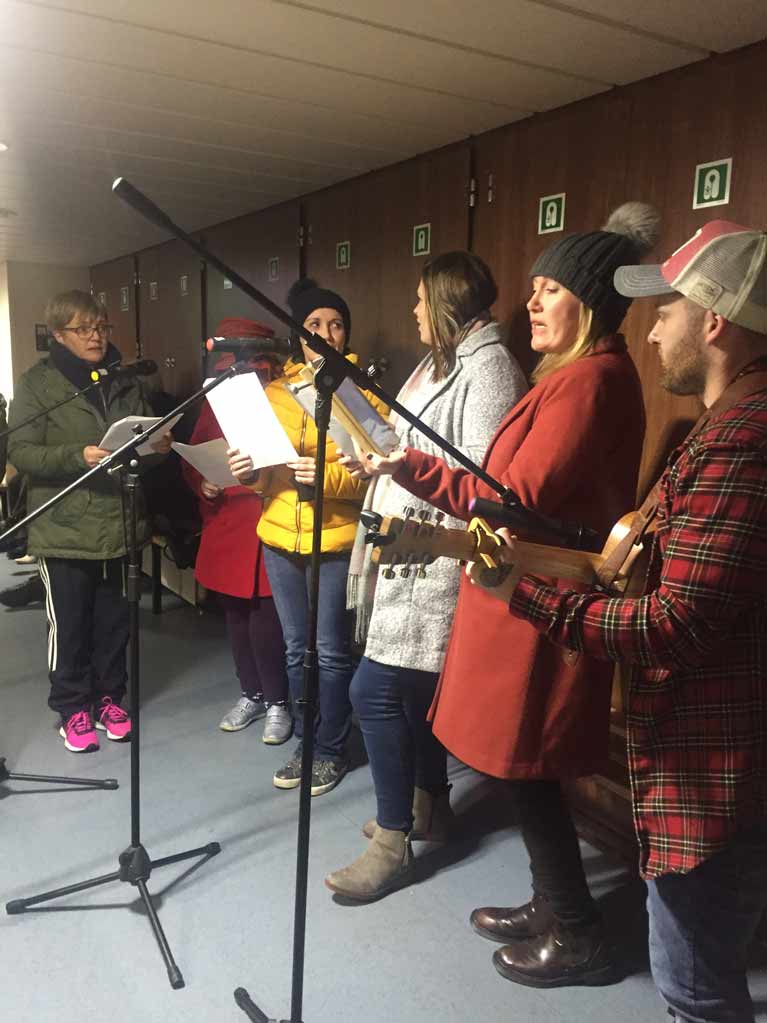 Singing Carols aboard the ferry
Singing Carols aboard the ferry
For two nights Christmas music rang out across the Lough and, on each sailing from 4.30 to 9.15 p.m., a different choir or group provided Christmas music. School choirs, folk groups, church choirs and various musicians took part. In Portaferry and Strangford villages, there were decorated houses, monuments and even boats. In Portaferry, there was the Christmas Tree Trail and a Parade of Lights,
Polish Christmas food in The Narrows Bistro and free Children's Activities and mulled wine and mince pies in the Sailing Club Hub. There was something for everyone - even Santa on a skiff! And in Strangford, a fabulous Victorian Fair was held in a heated marquee on The Green and Bells Traditional Funfair was there too. Merry Opera rounded off the festivities last night (Saturday) with Handel's Messiah, in Portaferry’s Arts and Heritage Centre, Portico, a restored church.


























